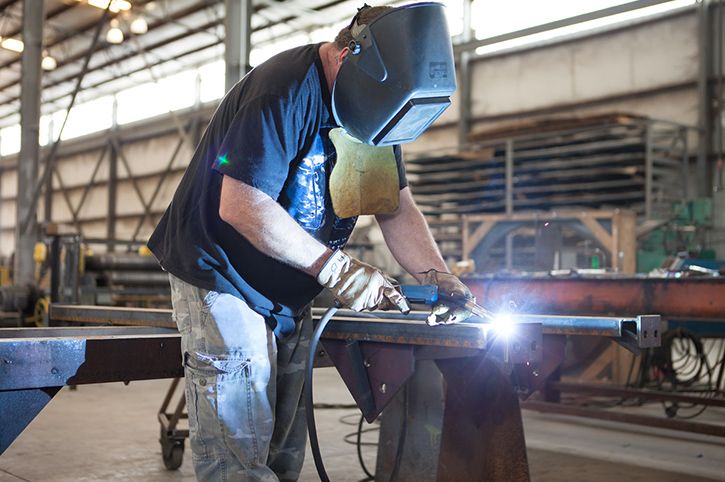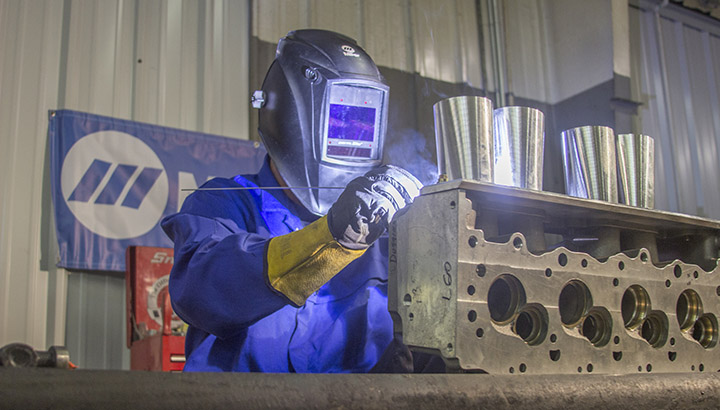Expert welding repair tips from Belgrade Welding professionals
Usual Welding Repair Work Issues and Just How to Address Them Efficiently
Welding repair work commonly experience a series of problems that can threaten the stability of the last item. Usual troubles include insufficient infiltration, porosity, and misalignment, among others. Each defect offers distinct obstacles that call for specific approaches for resolution. Understanding these concerns is necessary for welders aiming to improve their outcomes and skills. This conversation will check out these usual welding repair concerns and effective approaches to address them.
Poor Penetration
Insufficient penetration takes place when the weld metal stops working to completely fuse with the base material, resulting in weak joints and possible architectural failings. This issue typically comes from insufficient warmth input, wrong electrode angle, or incorrect welding rate. Welders may come across poor infiltration because of a mistake of the required parameters for a particular material density or type. Additionally, contamination on the base product's surface can hinder effective bonding, exacerbating the trouble. To resolve poor infiltration, welders must ensure appropriate settings on their tools and keep a tidy job surface area. Routine inspection of welds is advised to identify any shortages early, allowing for timely improvements and the avoidance of jeopardized architectural stability in welded assemblies.
Porosity
Porosity is a common issue in welded joints that shows up as little gas bubbles caught within the weld steel. This issue can compromise the integrity of the weld, leading to decreased stamina and potential failing under tension. Montana Mobile Welding and Repair Welding. Porosity typically emerges from contamination, moisture, or inappropriate welding techniques, which enable gases to run away into the liquified weld pool. To resolve porosity, welders must ensure proper surface prep work, keep a tidy working setting, and utilize ideal welding specifications. In addition, picking the ideal filler material and protecting gas can reduce gas entrapment. Normal inspection and screening of welds can assist identify porosity early, guaranteeing prompt restorative activities are taken, consequently preserving the quality and dependability of the welded framework
Misalignment
Imbalance in welding can occur from different factors, including inappropriate setup and thermal development. Understanding the origin is vital for reliable resolution. Numerous adjustment methods are readily available to realign parts and ensure architectural integrity.
Causes of Misalignment
Welding misalignment usually stems from a selection of underlying concerns that can jeopardize structural integrity. One key cause is inappropriate fit-up of parts prior to welding, which can result in spaces and unequal surfaces. Variations in thermal expansion throughout the welding procedure can additionally result in distortion, particularly if the products being joined have different coefficients of development. Furthermore, inadequate securing and fixturing might fail to hold parts securely in position, bring about motion during welding. Improperly maintained devices, including welding makers and devices, may present incongruities in the weld grain, further adding to misalignment. Lastly, driver error, originating from not enough training or experience, can additionally play a significant duty in developing misaligned welds.
Adjustment Methods Available
Addressing imbalance effectively needs a combination of rehabilitative methods customized to the particular concerns at hand. One common approach is the use of jigs or fixtures to hold components in the right position during welding, ensuring constant positioning. Furthermore, pre-heating the materials can help in reducing distortion and enhance fit-up. For substantial imbalance, mechanical realignment strategies, such as using hydraulic jacks or clamps, can be used to correct the position prior to welding. Post-weld warm treatment may additionally be needed to soothe tensions brought on by imbalance. Careful evaluation and change during the arrangement phase can stop misalignment concerns from becoming significant troubles, advertising a smoother welding procedure and enhancing general structural integrity.
Distortion
Distortion is an usual difficulty in welding that can occur from various aspects, consisting of uneven heating & cooling. Understanding the sources of distortion is necessary for implementing reliable prevention techniques. Resolving this concern not only boosts structural honesty yet additionally improves the total high quality of the weld.
Root causes of Distortion
When subjected to the intense heat of welding, products usually undertake adjustments that can cause distortion. This sensation mainly emerges from thermal development and contraction during the welding process. As the weld location warms up, the product expands; upon air conditioning, it contracts, which can create interior tensions. In addition, irregular heating throughout a work surface can aggravate these tensions, resulting in warping or bending. The kind of product additionally plays a significant duty; metals with differing thermal conductivity and coefficients of development might react differently, bring about unforeseeable distortions. In addition, inadequate joint design and insufficient fixturing can add to imbalance throughout welding, raising the likelihood of distortion. Understanding these causes is crucial for efficient welding repair and prevention methods.
Prevention Techniques
Effective prevention strategies for distortion throughout welding emphasis on controlling heat input and making certain appropriate joint layout. Keeping a constant warm input helps to reduce thermal growth and tightening, which can result in distortion. Utilizing techniques such as preheating the work surface can likewise lower the temperature slope, promoting uniform heating. Furthermore, choosing appropriate joint layouts, such as T-joints or lap joints, can improve stability and lower anxiety concentrations. Applying correct fixturing to secure the work surfaces in location additionally help in preserving placement during the welding procedure. Staggered welding sequences can distribute heat more uniformly, protecting against localized distortion. By using these techniques, welders can substantially reduce the chance of distortion and boost the total quality of their welds.
Splitting
Cracking is a typical problem run into in welding repairs, commonly resulting from numerous aspects such as improper air conditioning rates, material selection, or inadequate joint preparation. The incident of splits can significantly compromise the stability of the weld, bring about possible failings throughout procedure. To address this problem, welders need to initially analyze the root causes, making sure that materials are compatible and suitably picked for the details application. Additionally, anonymous regulating the air conditioning rate throughout the welding process is essential; quick cooling can cause tension and bring about breaking. Proper joint style and preparation likewise contribute to lessening the threat. Carrying out these techniques can boost weld quality and sturdiness, ultimately lowering the likelihood of breaking in completed weldments.

Incomplete Fusion
A considerable concern in welding repair services is incomplete fusion, which happens when the weld steel does not sufficiently bond with the base material or previous weld passes - Montana Mobile Welding and Repair Belgrade. This issue can lead to weak points in the joint, possibly compromising the integrity of the welded framework. Variables adding to incomplete fusion include insufficient heat input, improper welding strategy, and contamination of the surfaces being joined. To resolve this problem efficiently, welders ought to assure appropriate pre-weld cleansing and surface preparation, as well as change their welding criteria to attain ample penetration and fusion. Regular evaluation throughout the welding process can additionally help recognize insufficient blend early, permitting prompt corrective procedures to boost the overall top quality of the weld
Overheating
While welding repairs can boost architectural stability, overheating presents a substantial obstacle that can cause product degradation. Excessive warm during welding can change the mechanical homes of steels, leading to decreased toughness, increased brittleness, and warping. This sensation is specifically essential in high-stress applications where architectural integrity is vital. Recognizing overheating can involve aesthetic examinations for staining or distortion, in addition to checking temperature level throughout the welding process. To minimize the dangers related to getting too hot, welders should employ suitable techniques, such as managing warmth input, changing traveling speed, and using appropriate filler products. In addition, carrying out pre- and post-weld warm treatments can assist restore material buildings and enhance the overall top quality of the repair service, ensuring long-term performance and security.
Frequently Asked Inquiries
What Are the Typical Indications of a Welding Problem?

Exactly How Can I Test My Welds for Quality?
To evaluate welds for high quality, one can make here are the findings use of aesthetic assessments, ultrasonic testing, and radiographic approaches. Each method guarantees structural stability, recognizes issues, and verifies adherence to defined criteria, ultimately boosting the reliability of the welded joints.
What Safety Precautions Should I Take While Welding?
When welding, one should prioritize safety and security by putting on proper personal protective tools, making sure correct air flow, safeguarding combustible products away, keeping a tidy office, and being aware of surroundings to stop mishaps and injuries.
Can I Fix a Weld Without Renovating the Entire Joint?
Fixing a weld without redesigning the whole joint is feasible, depending upon the damage (Montana Mobile Welding and Repair Belgrade). Methods tungsten electrode such as grinding, including filler material, or making use of a welding procedure can effectively attend to specific flaws while preserving the surrounding structure
What Equipment Are Important for Effective Welding Services?
Essential devices for efficient welding repair work consist of a welding equipment, cable brush, grinder, protective equipment, clamps, and filler products. Each device plays an essential function in making certain quality and safety during the fixing procedure. Porosity normally occurs from contamination, moisture, or improper welding techniques, which allow gases to leave right into the liquified weld swimming pool. Inadequately maintained devices, consisting of welding machines and devices, may present incongruities in the weld grain, further contributing to misalignment. When subjected to the intense warmth of welding, materials usually go through adjustments that can lead to distortion. Splitting is an usual concern encountered in welding repair services, frequently resulting from numerous aspects such as incorrect air conditioning rates, material choice, or insufficient joint preparation. A considerable issue in welding repair services is insufficient blend, which occurs when the weld steel does not appropriately bond with the base material or previous weld passes.